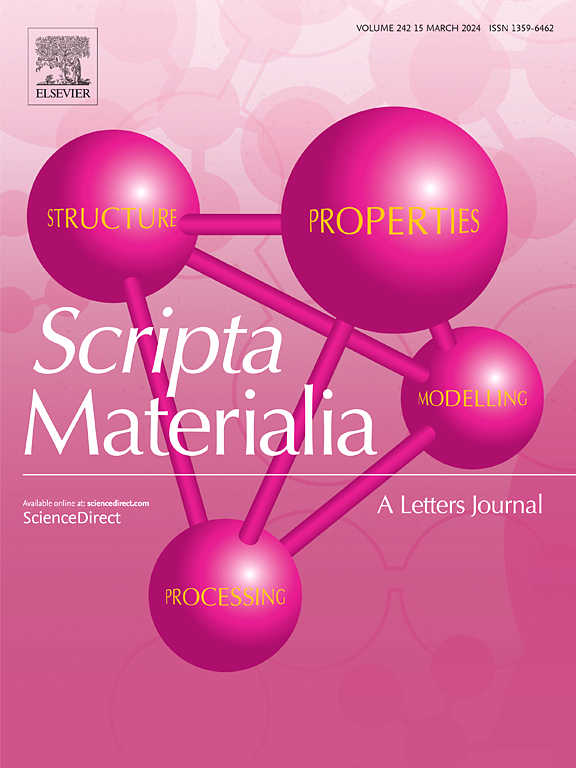Effect of WC/WC grain boundary misorientation angle on the local hardness in WC–Co cemented carbides
IF 5.3
2区 材料科学
Q2 MATERIALS SCIENCE, MULTIDISCIPLINARY
引用次数: 0
Abstract
Grain boundaries (GBs) generally exhibit complex structural and compositional features that significantly affect material hardness. Here, we establish a methodology to correlate the local hardness contributions of the GBs with their frequency distribution and their structural and compositional characteristics, using a submicron WC–Co cemented carbide as a model. An exceptional local hardness of (14.68 ± 0.12) GPa is observed from a 90° WC{0001}/WC{100} GB, unlike the low contributions from other WC/WC GBs. This is linked to pronounced Cr and Co segregation at this GB, due to Cr affinity at the WC{0001}/Co and WC{100}/Co phase boundaries and Co infiltration during liquid-phase sintering. Density functional theory results indicate that a large lattice mismatch, strong W–C covalent bonding, and Cr and Co accumulation increase the elastic strain field, resulting in strong atomic distortion near the interface and contributing to exceptional strengthening. Our findings highlight the critical influence of GB complexities on material hardness.

求助全文
约1分钟内获得全文
求助全文
来源期刊

Scripta Materialia
工程技术-材料科学:综合
CiteScore
11.40
自引率
5.00%
发文量
581
审稿时长
34 days
期刊介绍:
Scripta Materialia is a LETTERS journal of Acta Materialia, providing a forum for the rapid publication of short communications on the relationship between the structure and the properties of inorganic materials. The emphasis is on originality rather than incremental research. Short reports on the development of materials with novel or substantially improved properties are also welcomed. Emphasis is on either the functional or mechanical behavior of metals, ceramics and semiconductors at all length scales.
 求助内容:
求助内容: 应助结果提醒方式:
应助结果提醒方式:


